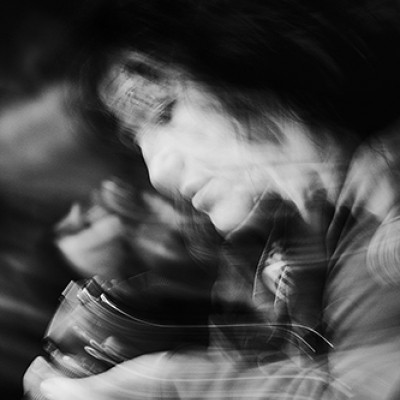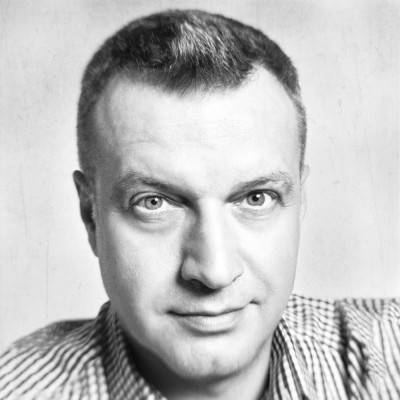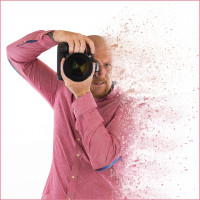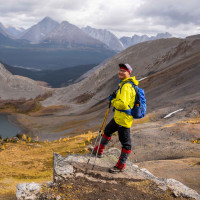SEARCH






|
|
|
|


by Editor Marius Cinteză
Published the 6th of November 2020
“My mission is to faithfully capture nature in its full grandeur and sublime, while at the same time to ensure that the final work is highly creative and artistic.” - Yiming Hu
Dr. Yiming Hu is an acclaimed landscape photographer, a best-selling landscape photography textbook author, and an educator. He is one of the best-known photographers in China. His photos, articles, and interviews have been frequently featured on covers and insides of countless magazines, books, posters, and other. His work has been collected by organizations and many private collectors in US, Canada, Europe,and Asia. His images have been licensed by clients include Apple Inc. and other companies, publishers, or non-profit organizations. His website, www.majestic-nature.com, attracts millions of visitors from around the world.
He is always drawn into capturing the magic landscapes inspired by the pure love of nature and the call of the wilderness, mostly using digital medium format photography. For him, landscape photography is more than just an objective recording of the scenery itself: it is a creative process where he does not just capture what he sees, but he shares with viewers how he sees the world!
I invite you to discover more about Yiming and his remarkable landscape works in the interview below!
First of all I would like to thank you so much for taking your time to answer my questions! To begin, please introduce yourself briefly and tell us about you, your hobbies or other jobs/projects you are involved in!
It is my honour! I wear several hats. I am a computer engineering professor and a professional photographer at the same time. That means that I have two full-time jobs and live two completely different ways of life. During the school year I teach and conduct research. During the summer/winter and holidays, I can be anywhere on this planet, often in some very remote locations, exploring and shooting landscape work. It is a very demanding and often stressful life. However, it has also been a very rewarding journey so far and I feel extremely lucky to afford such a lifestyle.
Let’s start from the beginning: when and how did you start your photographic journey?
When I was a freshman in college, I rented a twin-lens reflex medium format camera from a camera shop for a few days and started to fall in love with photography. I enjoyed spending time in the darkroom, watching images magically appear on film or photo papers under dim red safelight. After graduation I bought my first film SLR camera (a Ricoh), which costs a very large sum of money back then. A year later when I lived in San Jose, CA, someone broke into the house we rented and stole the camera. I was very busy with my work and with my PhD studies, so I did not purchase another camera until a decade later. However, the love for photography stayed with me during those years and I read many books about photography. I bought my first DSLR in 2005 and restarted making images, and I never looked back.
For many of us photography is either a hobby or a way of life. How would you define your relationship with photography?
It started as a hobby of course, but it has become a way of life now. Each year I spend months travelling around the world to seek the best and unique images. When I am not on the road, I also spent lots of time dealing with photography related activities, such as giving online talks/lectures or interviews, writing books or articles, etc. The best part? I don’t “have to” do all of these just to make a living. I do all of these because I absolutely love to do so!
What would be the most important experience so far that has influenced your steps in photography?
I would say the two major solo exhibitions I did last year. As I mentioned when answering other questions, I am experimenting with a new way of capturing landscape photography – using the most advanced medium format technical cameras to capture highly dynamic, contemporary style landscape images of some most remote and amazing locations of this world. It is not an easy endeavour, and you will not see any benefit of doing so in the age of small screens of social media. However, after seeing the huge prints exhibited in galleries and receiving overwhelmingly positive responses from the viewers and the community, I know that all the efforts and hardship I endured are really worth it, and I should continue to do so.
How do you maintain and grow your passion for photography? What inspires you?
The pure love of nature and the call of the wilderness inspire me constantly. Some people pursue fame, for which I do not blame. However, one day you might be feeling tired. If you have a true love of nature, you will be willing to travel to the most isolated and tough terrains, under some horrendous weather conditions, to capture images you like, even if you were not allowed to share them to the world.
Can you please describe in a few words your photographer philosophy and mission?
Landscape photography is more than just an objective recording of the scenery itself. It is a creative process. We do not just capture what we see. We share with our viewers how we see the world. My mission is to faithfully capture nature in its full grandeur and sublime, while at the same time to ensure that the final work is highly creative and artistic.
You are exceptionally proficient in landscape and nature photography! These are areas where many photographers try to stand out, but very few even succeed. What first attracted you to these photography types?
My passion for nature started in my childhood. My family lived a few minutes away from a huge park. Within it, there are a few hills and forests, right in the centre of the city. I found myself spending countless hours after school wandering in remote corners of the park, observing the flora and fauna and the light and shadows. This love for the wild only grows stronger as I become older.
What do you think are the top three secret ingredients for a remarkable landscape photograph?
A remarkable landscape photograph should be visually unique, technically flawless and evoke a strong emotion. It should also convey enough information about the subject to the viewers so they can appreciate the true wonder, the complicity, and the richness and uniqueness of nature. I know I listed four ingredients here, but the last one is very important IMO. A landscape image that is pretty in visual forms only is just eye-candy if it lacks a true description about the richness of nature.
What do you think that makes your landscape works differently?
I am experimenting on a path that very few nature and landscape photographers have gone. When you look at the history of landscape photography, you will find that most old masters such as Ansel Adams created their work using large format cameras. Such equipment provides an exceedingly accurate powerful tool to record the minute details of the world very precisely. However, the bulkiness and many other inherent limitations of such devices severely limit the flexibility of the creative process. Images often look static, and it is very difficult to carry such systems to reach remote locations or shoot in “bad” weather (which is often the best time to shoot).
Almost all modern masters go to another extreme: they use 35mm DSLR or mirror-less systems. The compactness and flexibility of such cameras have completely revolutionized the creating process and allow us to create images which were not possible to capture before. However, the image quality of such cameras is a compromise – good enough for online display or small to medium sized prints (such as 20x30 inch), but never adequate to produce truly large, exhibition-quality images.
Recently, for the first time in history, medium-format digital backs and technical cameras start to offer image quality as good as large format films while avoiding most of the limitations. Such systems are mostly used by fashion or commercial photographers and some amateur landscape photographers. I am among the very first and few to use such systems to create modern landscape photography professionally. They are much heavier, much more complicated, and more difficult to use compared to 35mm systems, but the results are well worth the efforts.
I am trying to make my image styles contemporary. Many of them were taken at unique angles, often in remote wilderness. The compositions are highly dynamic and flexible, similar to those taken with a small DSLR. At the same time, my work is faithful to nature and preserves all the incredible details and grandeurs, same as those taken with a large format camera.
The size of the final image affects the way an image is created as well as the way it is viewed. If you try to fit too much information into a small screen, it will be a total disaster. As a result, for most landscape photographers using small cameras, the creating processing involves great simplification – we basically reduce everything into some very basic visual forms, and the photographer controls the viewer’s experience by presenting just enough information. We are essentially telling the viewer: “Please just look at these forms, these leading lines, and these light/dark transitions, etc., and I don’t want you to find other things I am hiding in the image.”
Very large prints are completely different. They are not just bigger. They contain so much more information for the viewers to explore by themselves. I like to quote Stephen Shore’s explanation of why he chose to use 8x10 cameras: “I realized that with the 8x10, I could rely on its descriptive power.” “No longer was it pointing at something in the world saying look at this. I was creating a little world that a viewer can move their attention through without directing it.” Sure, the photographers still need to control the basic photography forms such as leading lines to give the viewers some visual clues and guide them, but the overall viewing experience is completely different.
Can you please tell us something more about your workflow for landscape photography?
I do not shoot a lot in the field. I click the shutter only when I feel that I can get the shot. However, I do shoot enough frames (for focus stacking, exposure blending, or other purposes) if I must. In post processing, I do lens sharpness and falloff corrections, exposure blending, and focus stacking first, and/or highlight/detail recovery. These are standard technical adjustment steps, which are almost mechanical. After that I do artistic adjustments. I do not follow any specific steps in this stage. Some images are almost straight out of camera, while some require hours of processing, involving global or very fine local colour/contrast adjustments or other complicated stuff. I seldom use fancy tools or plug-ins. The Adobe Camera RAW filter, as well as curve/colour adjustment layers plus masks, are all I need. There is no right way to do post processing. Everyone has their own preferences. My advice is to pick up only a handful of tools and know them really well, instead of trying to use hundreds of different tools.
What would be the main features of a successful landscape photographer in your opinion?
Someone who constantly creates images that have distinct personal styles, and strongly influences others artistically and technically.
Good knowledge of the location for shooting landscape photography is a must. How do you approach a new location when shooting for the first time there: are there any specific subjects or compositions you are looking for during your trips?
I do use all the wonderful modern tools available to us – Google Earth, Google Maps, PlanIt Pro and other planning apps, etc., before I set foot in there. However, for me, nothing can replace the old-fashioned way of being in the real place to explore. When I arrive at a new location for the first time, I always spend time – hours or even days – to explore and find the best possible spots or angles. I try to find orders in chaos. I try to identify the few viable options out of seemingly endless possibilities (most of them do not really work). Most of the time the small things – a few rocks here, a tree there, or some ice crystals just frozen up this morning, will make or break the image.
What would be your favourite photo from the last years? Please tell us the story behind it.
I will say it has to be “Reflection Canyon at Night". I must point out that it is probably not my best shot of last year. Nor is it the most unique one. It takes a lot, including luck and chance, and a flash of inspiration, to create your best images. This one was a result of very careful planning and meticulous execution, so it was a predictable result. Others very rarely visited the location, but it is not totally unique like some of my other images.
Still, it is a very special image. This night-scape image consists of 600 Megapixels. The final result, when exhibited in a huge gallery, was a 2-story high, 9x6 meter installation. It was one of the largest, perhaps the largest, high resolution landscape photos ever produced in history. It was a very complex and expensive project to plan, to shoot, and to manufacture and to install the image. During the exhibitions, it was an incredible experience to stand merely a meter away from this huge print and able to see all the countless stars and the minute details of the canyon, as if the real canyon were in front of you.
Long story short: when I found the water level of this amazing canyon, it was at the lowest point in many years. As a result, the light-colored ridges would emerge above the water to form the beautiful S-curves. The arc of the full Milky Way would be right in the centre of the composition during that period of year. Me and three other friends rented a speedy boat. I drove that thing for hours, across the vast lake, and parked the boat in a remote spot of the shore. We then climbed to the top of the cliff to make this image. Even with a 100MP Phase One digital back, I still had to do a multi-row stitch of many low-ISO-long-exposure frames to achieve the required pixel counts and image cleanness, a super complicated process. It was one thing to spend 30 seconds at the edge of the cliff using high ISO to snap a Milky Way image and walk back to safety. It was a completely different story to spend an hour or so in the darkness at the edge of the cliff, going around the tripod (so I was merely inches away from falling down) to align the equatorial tracker, and to shoot many long exposure frames. It was actually very dangerous, maybe even a little bit reckless may I admit, but I am satisfied with the result.
Many are of the opinion that the gear is not very important when the passion for photography is strong. However, can you please share with us what gear do you use (camera, lenses, tripod)?
It really depends on the genres, as well as what kinds of final products you want to deliver. For example, for wildlife and sport photography, without the proper lenses and camera bodies, you probably will get no image at all. Gear is certainly one of the most important deciding factors here.
For landscape photography, if you just want to show you work to audiences via Facebook, Instagram, or even high-resolution websites such as 1x, the type of gear you are using does not matter at all. Viewers will not see differences between an entry-level camera and a high-end one. It is the artistic and technical skills that make or break an image.
However, I have a unique need. As I’ve just mentioned, I do not just show my images on social media or make small prints. I want to show my work, in huge formats and with the highest possible quality, in galleries and other venues.
Gear is very important in my case. I had some early work that I really like, but I could not print them big, since they were shot using 35mm DSLRs. At this moment, most of the time I use digital medium format technical cameras. I am using a Phase One 150-megapixel digital back, some Alpa technical cameras (12 MAX, 12 PLUS, and 12 STC), as well as many Rodenstock high-resolution lenses (HR 23, HR 32, HR 50, HR 90, HR 180). This is the very best camera system that money can buy now. The system is very expensive and heavy, and hard to use, but the image quality as well as the level of controls are absolute mind-blowing. I do occasionally use some 35mm cameras, especially when I need a very long tele lens, when I shoot in inclement conditions such as in front of huge incoming ocean waves, or when I need to go ultralight. I own Canon/Sony/Nikon systems, but it really does not matter which one to pick, as they are all very similar.
I’m sure that many of the beginners in landscape photography would like to follow your way. What is your advice for them? What would be the qualities of a successful landscape photographer?
Be yourself. Take the road less travelled. And more importantly, always try to seek your own unique images instead of chasing the trophy iconic ones, even in the most unlikely locations. These sure sound like a cliché but let me give you two examples. Two of my most popular images, “Eternal Curve” and “Horseshoe”, were taken in the Lower Antelope Canyon and the Horseshoe Bend, respectively. Both locations have been shot zillions of times and the consensus is that there is absolutely no way to find unique views. Well, guess what? Both images were completely unique when I created them, simply because I tried. They have become the inspirations of so many other photographs who visit the two locations.
Which aspects of your landscape photographer life do you find the most challenging?
Find enough time! There are so many places that I want to visit, and so little time available. Maybe it is because I have two full time jobs!
Who are your favourite photographers or mentors whose works have influenced you and your photography?
I am a self-learner, and I have learned a lot from so many other photographers. I studied the fundamental concepts of landscape photography from John Shaw’s excellent introductory books such as “John Shaw's landscape photography”. These books got me started in this field many years ago. I studied the work of many landscape photographers that I admire, including Michael Fatali, Michael Kenna, and Ian Plant, just to name a few. I have been in the field shooting with my friend Marc Adamus , and recently we work together to lead some tours to some very best and remote areas. Marc’s work is always fresh and very inspirational. I am a good friend of Mr. Hong Luo, one of the best, if not the best, aerial nature photographers in the world. We have been together soaring over many incredible locations around the world and I really admire his work, his dedication, and his contribution to nature preservation efforts.
You have joined the 1x community in 2011. Where did you first learn about 1x and why do you think 1x is different?
I first learned about 1x from some friends who mentioned the website in an internet forum. I was very impressed by the creativity and originality of the work on the website. They were so different from the rest of the crowds. I did not get heavily involved with 1x (in fact I am hardly active on any social media platform) for years (I know I should). I have become more active recently and plan to continue to do so.
Now, since we almost reached the end of this interview, I would kindly ask you to share with us your future plans or photographic projects you would like to involve in.
Cannot wait for the pandemic to be over! I have lots of plans, including projects shooting Tibet and other western parts of China, New Zealand, as well as the Patagonia and other South American regions.
 | Write |
 | Raceala Elena PRO Congrats both of you for this great interview and wonderful images! |
 | Marius Cinteza CREW Elena, many thanks! :-) |
 | Vincent Willems I really enjoyed reading this, also i have to say beautifull pictures. Thank you ! |
 | Marius Cinteza CREW Thank you, Vincent!! |
 | Yongnan Li (李永男) PRO Finally, I saw an interview from Yiming Hu(云漫), which is the Chinese web name is more famous to me. Thank you for share these experience and thought. |
 | Marius Cinteza CREW Thank you, Yongnan, for sharing your thoughts!! |